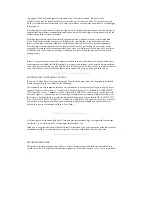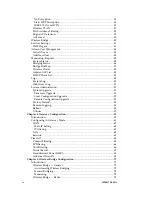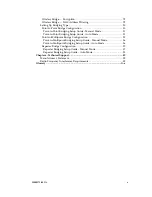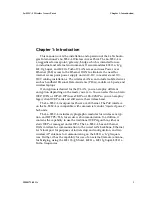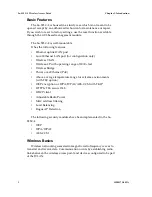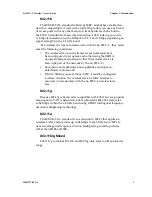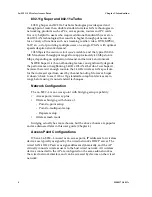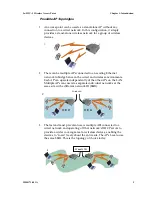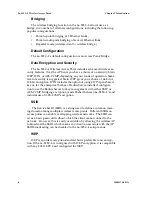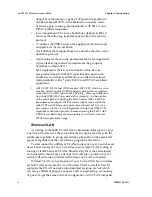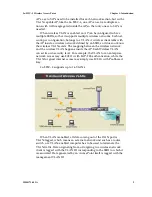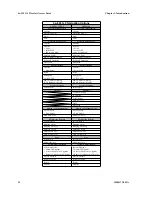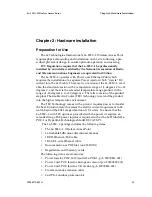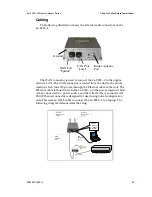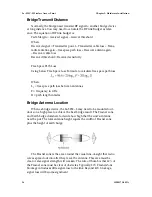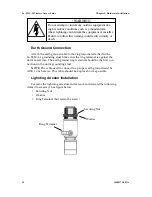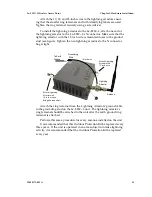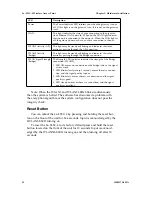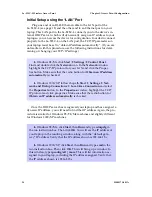
3e–525C–3 Wireless Access Point
Chapter 1: Introduction
8
29000171-001 A
3e–525C–3 Wireless Access Point
Chapter 1: Introduction
29000171-001 A
9
APs, a set of APs need to be installed for each network section; but with a
VLAN capable AP, like the 3e–525C–3, one AP can serve multiple sec-
tions with traffic segregated inside the AP, so that only one set of APs is
needed.
When wireless VLAN is enabled, an AP can be configured to have
multiple SSIDs, so that it supports multiple wireless networks. Each net-
work, per configuration, belongs to a VLAN. A wireless client talks with
the AP inside a wireless network defined by an SSID, so it does not know
the wireless VLAN exists. The mapping between the wireless network
and the wireless VLAN happens inside the AP. Each Wireless VLAN
can set its own security level. For example, the VLAN for an enterprise
network access may use 802.11i with EAP-TLS authentication, while the
VLAN for guest internet access may simply use 802.11i with Pre-Shared
Key.
3e–525C–3 supports up to 16 VLANs.
When VLAN is enabled, all data coming out of the WAN port is
VLAN-tagged, which means an external network unit such as a router,
switch, or a VLAN-enabled computer has to be used to terminate the
VLAN traffic. Data originating from or targeting to a wireless network
client is tagged with the VLAN ID corresponding to the SSID to which it
is associated. Data generated by an Access Point itself is tagged with the
management VLAN ID.


